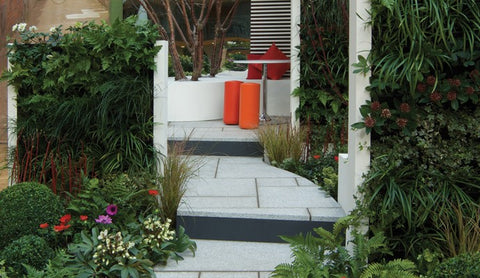
Known for their beauty, serenity and simplicity, Japanese gardens are world-renowned. We’re going to look at some of their key features to help you instil a little tranquility into your own garden.
1. Less is more

In Japan, Kanso (簡素) is one of the main design principles, which can be translated as simplicity or elimination of clutter. Gardens should be designed with clarity in mind rather than decoration, and non-essential items should be discarded. Find out more about the key principles.
2. Natural features

The dry landscape garden - Karesansui (枯山水) - is one of Japan’s best known garden types, and is sometimes referred to as a ‘Zen garden’. Dry gardens are often characterised by their representation of rivers using gravel and pebbles, rather than water itself. Stepping stones, known in Japan as tobi-ishi (飛石), are also used to represent meandering rivers and streams, and can give your garden a peaceful feel.
3. Japanese plants

Plants play an important part in Japanese garden design. Usually, they are planted sparsely - partly to follow the simplicity principle, and also to emphasise the space around the plants. Japanese maples are a great choice, especially with their beautiful autumnal colours.
4. Get inspiration from existing Japanese gardens

Did you know that there are over 50 Japanese gardens open to the public in the UK? With the likes of Calderstones Park and Tatton Park featuring stunning Japanese-inspired displays, you can easily get some inspiration for your own outdoor space, and have a great day out at the same time! Find your nearest Japanese garden today.
Visit Landscape World
Hopefully this has given you some insight into the key features of Japanese gardens, although there are many more to explore! If you’d like some more garden inspiration, come and visit our specialist paving centre in Widnes for all of your landscaping needs.








